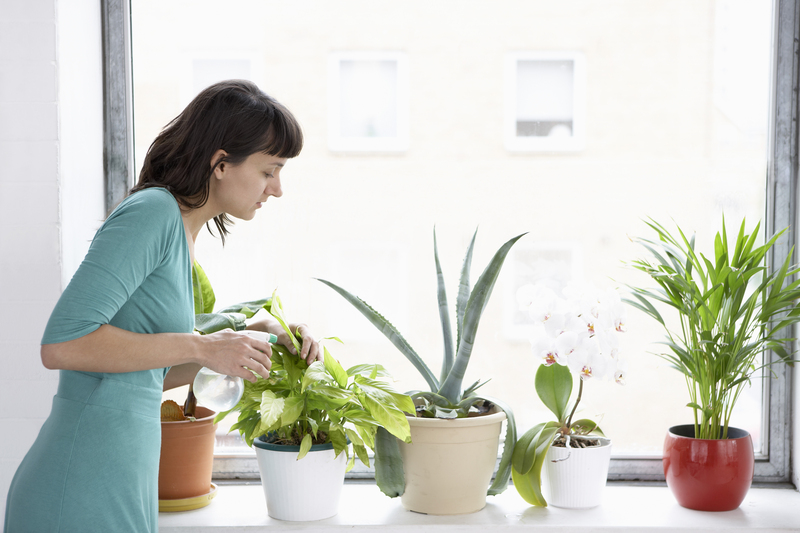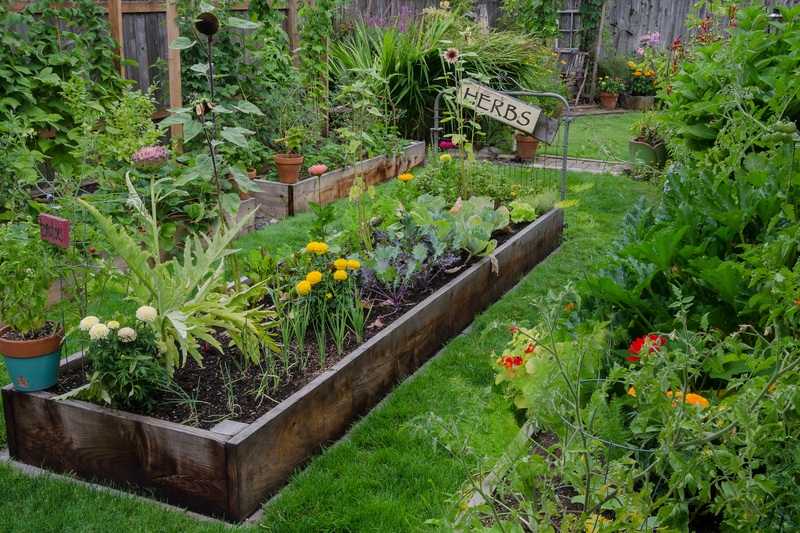The Ultimate Guide to Happy Orchids
Posted on 25/05/2025
The Ultimate Guide to Happy Orchids
Orchids--with their elegant beauty and intriguing variety--continue to captivate plant lovers across the globe. Yet, many growers find nurturing these delicate blooms to be both a rewarding and mysterious challenge. This comprehensive, seo-optimized guide unveils the secrets to cultivating joyful, healthy orchids right in your home or garden.
Table of Contents
- Why Orchids Are Special
- Choosing the Right Orchid for You
- Orchid Basics: Anatomy and Growth
- Orchid Care Essentials for Thriving Plants
- Common Orchid Problems and Solutions
- How to Get Your Orchids Blooming Again
- Advanced Tips for Energetic, Happy Orchids
- Frequently Asked Questions
- In Conclusion: Growing Happy Orchids
Why Orchids Are Special
Orchids belong to the Orchidaceae family, which is one of the largest and most diverse families of flowering plants on Earth. Spanning over 25,000 species and countless hybrids, orchids dazzle with their vibrant hues, intricate shapes, and intoxicating fragrances. Whether you are a novice or an expert, happy orchids bring life, color, and a touch of luxury to any home.
- Exotic Appearance: Unique petals and striking forms set orchids apart from other household plants.
- Long-lasting Blooms: With proper care, orchid flowers can last for months.
- Symbolism: Orchids represent love, beauty, strength, and luxury in many cultures.
The Allure of Happy Orchids
There's something uniquely rewarding about seeing your orchid thrive and bloom. A happy orchid not only beautifies your home but also showcases your skill as a grower. Learning how to make your orchids feel at home is the first step toward a successful relationship with these stunning plants.
Choosing the Right Orchid for You
Orchid species vary widely in their needs. Selecting the right orchid is crucial to your long-term success and happiness as an orchid grower. Here are popular choices for beginners and enthusiasts alike:
Popular Orchids for Beginners
- Phalaenopsis (Moth Orchids): The most common household orchid, admired for its resilience and variety of colors.
- Cattleya: Known for their stunning, fragrant blooms--great for growers seeking fragrance.
- Dendrobium: A diverse group with species tolerant to various conditions.
- Oncidium: Often called "dancing ladies" due to their playful blooms.
When choosing your orchid, consider your light conditions, humidity levels, and how much time you can devote to care. Beginners will often find phalaenopsis orchids to be forgiving and rewarding.
Orchid Basics: Anatomy and Growth
Understanding the structure of an orchid is essential for proper care. Orchids have a few key parts:
- Roots: Thick, fleshy, and often green. They absorb moisture and nutrients from the environment.
- Leaves: Usually broad and leathery, responsible for photosynthesis.
- Stem: Supports growth and can produce new shoots.
- Flowers: The iconic blooms that make orchids so popular and striking.
Unlike many houseplants, most orchids are epiphytes, meaning they grow on trees rather than in soil. This unique trait influences how you care for them.
Orchid Care Essentials for Thriving Plants
The journey to happy, healthy orchids begins with providing the right conditions. Let's explore what Orchids need to flourish all year round:
1. Light Requirements
Orchids need plenty of indirect light. A north or east-facing window is often ideal. Too much direct sunlight may scorch the leaves, while too little will hinder bloom.
- Too much light: Yellowing leaves may indicate sunburn.
- Too little light: Dark green leaves and lack of flowers.
2. Watering Orchids Correctly
Overwatering is a common cause of orchid distress. Avoid letting roots sit in water.
- Water orchids once per week (more often when hot and dry).
- Ensure the potting medium dries slightly between waterings.
- Water in the morning with lukewarm water.
Tip: Use the "finger test"--if the mix is dry one inch down, it's time to water.
3. Humidity and Temperature
Orchids thrive in humidity levels between 40% and 70%. Temperature also plays a role in keeping orchids happy:
- Day temperatures: 65-80?F (18-27?C)
- Night temperatures: 55-65?F (13-18?C)
Boost humidity with a humidity tray or by misting. Grouping plants together also helps maintain consistent moisture.
4. Proper Potting and Repotting
Healthy orchids require a well-draining orchid mix--never regular potting soil! Ideal mixes contain bark, perlite, and charcoal.
- Repot orchids every 1-2 years, or when the medium breaks down.
- Always choose pots with drainage holes.
- Repotting is best done after the orchid has finished blooming.
5. Feeding and Fertilizing Orchids
Feed orchids lightly with a balanced fertilizer--ideally 20-20-20--diluted to half strength. Feed every 2-3 weeks during active growth, then reduce in winter.
Common Orchid Problems and Solutions
Even when care is meticulous, orchids can face health challenges. Here's how to keep your orchids happy when issues arise:
Yellowing Leaves
- Cause: Overwatering, poor drainage, or excessive sunlight.
- Solution: Ensure proper moisture levels, adjust lighting, and use well-draining pots.
Root Rot
- Cause: Roots standing in water; breakdown of potting medium.
- Solution: Repot with fresh, airy mix and trim away soft, black roots.
Bud Blast
- Cause: Sudden temperature changes, dry air, or under-watering.
- Solution: Maintain consistent environment and humidity.
Pests
- Common Pests: Mealybugs, scale, spider mites.
- Solution: Wipe leaves with a mild soap solution, or use horticultural oil for severe infestations.
Inspect your orchids regularly to stop problems before they become serious, ensuring your orchids stay happy and blooming.
How to Get Your Orchids Blooming Again
Waiting for an orchid to rebloom can be a test of patience. Here are the best strategies for encouraging those stunning flowers to reappear:
- Seasonal Light: Increase light in autumn to trigger new flower spikes--just avoid direct midday sun.
- Cooler Nights: Many orchids, especially Phalaenopsis, need cooler night temperatures (around 55-60?F or 13-16?C) for several weeks to stimulate blooming.
- Feeding: Adjust fertilization to a "bloom booster" formulation high in phosphorus when bud spikes form.
- Patience: Some species only bloom once per year. Resist the urge to overwater or over-fertilize in hopes of speeding the process.
Remember: Happy orchids bloom when their environmental needs are consistently met.
Advanced Tips for Energetic, Happy Orchids
Once you've mastered the basics, use these advanced tips to take your orchid care to the next level:
- Air Circulation: Orchids benefit from gentle airflow--use a small fan nearby to prevent fungal problems.
- Water Quality: Use rainwater or distilled water if your tap water is hard or high in chlorine.
- Leaf Cleaning: Wipe leaves occasionally with damp cloth to remove dust and pests.
- Orchid Mounting: Try mounting certain species (like Vanda) on bark or cork slabs for a natural look.
- Experiment with Hybrids: Explore the fascinating world of hybrid orchids for expanded color, form, and resilience.
As your collection grows, keep a journal noting what works best for your distinct lineup of happy orchids.
Frequently Asked Questions
How often should I water my orchid?
Water every 5-10 days, or when the potting medium is nearly dry. Environmental factors like humidity and temperature affect watering frequency.
Do happy orchids require pruning?
After blooms fade, prune the flower spike just above a node to encourage new branch growth (for reblooming species like Phalaenopsis).
Are orchids toxic to pets?
Most popular orchids, including Phalaenopsis and Dendrobium, are non-toxic to cats and dogs, but avoid letting pets chew the leaves.
Can orchids be grown outdoors?
In warm, humid climates, many orchids thrive outside in shaded areas. Always bring them indoors if cold snaps are predicted.
In Conclusion: Growing Happy Orchids
With patience, observation, and a little bit of science, anyone can grow happy, healthy orchids that brighten up the home for years to come. Remember, every orchid has a personality--embrace the learning curve and celebrate each fresh leaf and bloom. With the techniques in this guide, your orchids will be among the happiest and most stunning flowers in your collection.
Start today by choosing the right species and following the orchid happiness essentials outlined above. Soon, you'll enjoy the majestic, lasting blooms that make orchids truly extraordinary!



